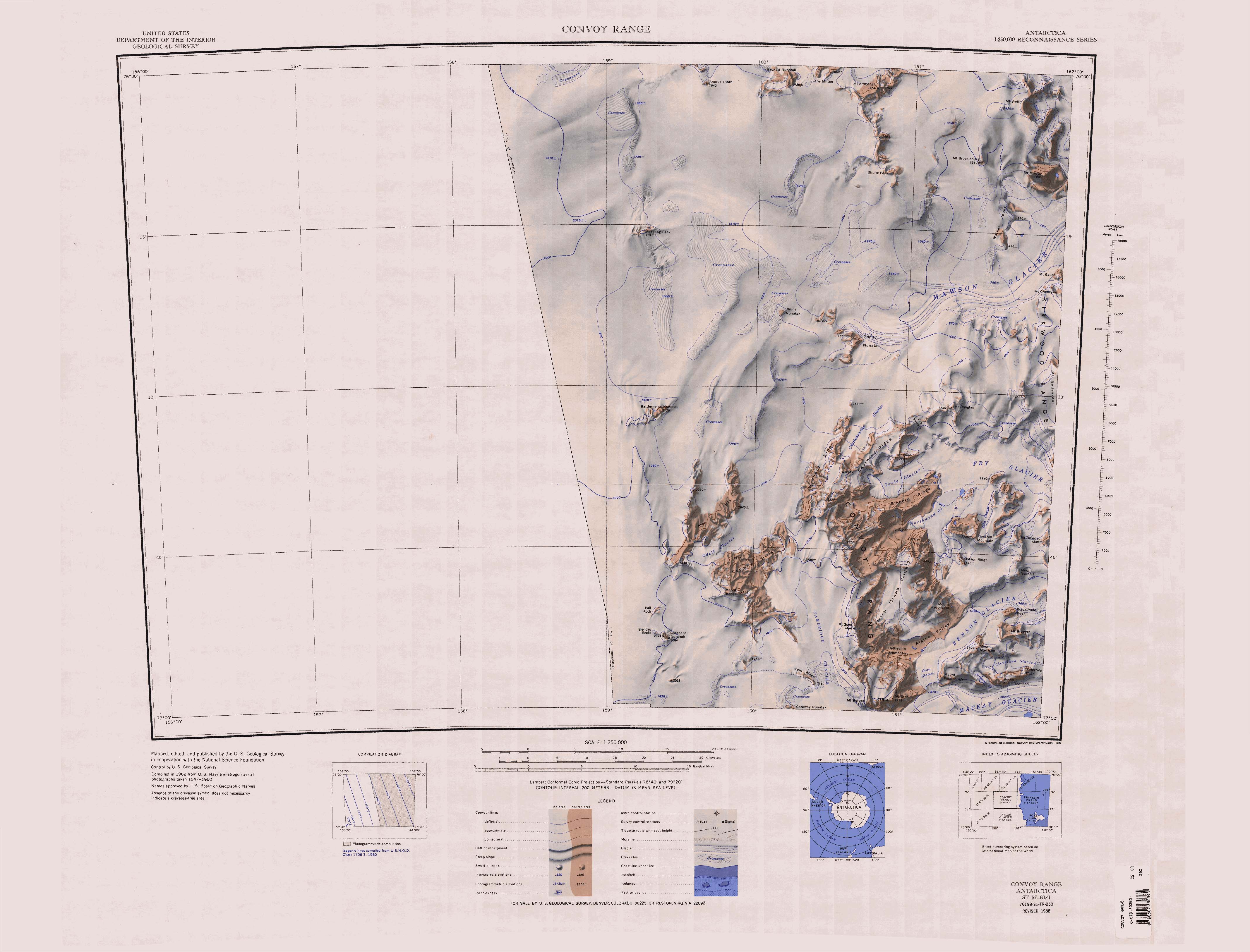Coombs Hills on:
[Wikipedia]
[Google]
[Amazon]
The Odell Glacier () is a glacier draining northeast between
 Features of the terrain around the glacier include:
Features of the terrain around the glacier include:
Allan Hills
The Allan Hills () are a group of hills, mainly ice free and about long, lying just north-west of the Coombs Hills near the heads of Mawson Glacier and Mackay Glacier in the Oates Land and Victoria Land regions of Antarctica.
Exploration and n ...
and Coombs Hills into the upper Mawson Glacier
The Mawson Glacier () is a large glacier on the east coast of Victoria Land, Antarctica, descending eastward from the Antarctic Plateau to the north of Trinity Nunatak and the Kirkwood Range, to enter the Ross Sea, where it forms the Nordenskjöl ...
in Victoria Land
Victoria Land is a region in eastern Antarctica which fronts the western side of the Ross Sea and the Ross Ice Shelf, extending southward from about 70°30'S to 78th parallel south, 78°00'S, and westward from the Ross Sea to the edge of the Ant ...
, Antarctica.
It was named by the New Zealand Antarctic Place-Names Committee New Zealand Antarctic Place-Names Committee (NZ-APC) is an adjudicating committee established to authorize the naming of features in the Ross Dependency on the Antarctic continent. It is composed of the members of the New Zealand Geographic Board pl ...
(NZ-APC) for Noel Odell, who was a mountaineer and was professor of geology at the University of Otago from 1950 to 1955.
Location
The Odell Glacier forms between theAllan Hills
The Allan Hills () are a group of hills, mainly ice free and about long, lying just north-west of the Coombs Hills near the heads of Mawson Glacier and Mackay Glacier in the Oates Land and Victoria Land regions of Antarctica.
Exploration and n ...
and the Coombs Hills, which contain Mount Brooke.
To the southwest of its head are Hall Rock, Brandau Rocks and Carapace Nunatak.
The glacier flows northeast past the Convoy Range to the Mawson Glacier.
Field camp
The United States set up an Antarctic field camp on the glacier during the summer of 2001 at .Tributary
Irving Glacier
. A glacier that flows northwest between Coombs Hills andWyandot Ridge
Eastwind Ridge () is a broad, partially ice-covered ridge about long between Chattahoochee Glacier and Towle Glacier in the Convoy Range of Antarctica.
Exploration and naming
Eastwind Ridge was mapped by the United States Geological Survey ...
to enter Odell Glacier.
Named in association with nearby Wyandot Ridge after Captain R.K. Irving, U.S. Navy (USN), commander of USS ''Wyandot'' (AKA-92), a cargo ship in the Ross Sea Unit in Operation Deep Freeze IV, 1958-59.
Features
 Features of the terrain around the glacier include:
Features of the terrain around the glacier include:
Coombs Hills
. An area of broken and largely snow-free hills and valleys between the Odell Glacier and Cambridge Glacier. Discovered in 1957 by the New Zealand Northern Survey Party of theCommonwealth Trans-Antarctic Expedition
The Commonwealth Trans-Antarctic Expedition (CTAE) of 1955–1958 was a Commonwealth-sponsored expedition that successfully completed the first overland crossing of Antarctica, via the South Pole. It was the first expedition to reach the South ...
(CTAE) (1956-58) and named by them for Doug Coombs, professor of geology at the University of Otago, New Zealand, who assisted the expedition in obtaining essential petrological equipment.
Mount Brooke
. A large isolated mountain, high, standing northwest of Mount Gran and dominating the area near the heads ofMackay Glacier
Mackay Glacier () is a large glacier in Victoria Land, descending eastward from the Antarctic Plateau, between the Convoy Range and Clare Range, into the southern part of Granite Harbour. It was discovered by the South magnetic pole party of the B ...
and Mawson Glacier
The Mawson Glacier () is a large glacier on the east coast of Victoria Land, Antarctica, descending eastward from the Antarctic Plateau to the north of Trinity Nunatak and the Kirkwood Range, to enter the Ross Sea, where it forms the Nordenskjöl ...
.
Named for Lieutenant Commander F.R. Brooke, Royal Navy, leader of the 1957 New Zealand Northern Survey Party of the CTAE, 1956-58.
Hall Rock
. A large rock located northwest of Carapace Nunatak at the edge of theAntarctic Plateau
The Antarctic Plateau, Polar Plateau or King Haakon VII Plateau is a large area of East Antarctica that extends over a diameter of about , and includes the region of the geographic South Pole and the Amundsen–Scott South Pole Station. Thi ...
.
Named by the United States Advisory Committee on Antarctic Names
The Advisory Committee on Antarctic Names (ACAN or US-ACAN) is an advisory committee of the United States Board on Geographic Names responsible for recommending commemorative names for features in Antarctica.
History
The committee was established ...
(US-ACAN) for geologist Bradford A. Hall who, with Harold W. Borns, did research on the so-called Mawson Tillite in this vicinity, 1968-69.
Brandau Rocks
. Rock exposures west of Carapace Nunatak. Reconnoitered by theNew Zealand Antarctic Research Programme
The New Zealand Antarctic Research Programme (NZARP) was a research programme that operated a permanent research facility in Antarctica from 1959 to 1996. It was created by the Geophysics Division of New Zealand's Department of Scientific and Indu ...
(NZARP) Allan Hills Expedition (1964), who named the rocks for Lieutenant Commander James F. Brandau, United States Navy, helicopter pilot who made a difficult rescue flight to evacuate an injured member of the expedition.
Carapace Nunatak
. A prominent isolated nunatak, the most westerly near the head of Mackay Glacier, standing southwest of Mount Brooke where it is visible for a considerable distance from many directions. So named by the New Zealand party of the CTAE (1956-58) because of the carapaces of small crustaceans found in the rocks.References
Sources
* * * {{Antarctic fields camp Glaciers of Victoria Land